An example of the effectiveness of directional overcurrent relays (ANSI 67, 67N)
When fault currents can flow in more than one direction with respect to the load current it is often desirable to determine which direction the fault current is flowing and trip the appropriate devices accordingly. This is usually due to the need… Read more
Oct 10, 2014 | By Edvard Csanyi
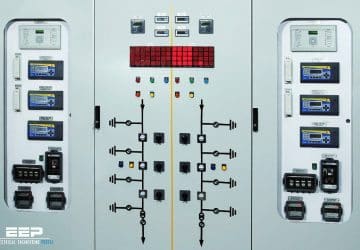
Applications and characteristics of overcurrent potection relays (ANSI 50, 51)
Overcurrent relays are the most commonly-used protective relay type. Time-overcurrent relays are available with various timing characteristics to coordinate with other protective devices and to protect specific equipment. Instantaneous overcurrent relays have no inherent time delay and are used for fast short-circuit… Read more
Oct 08, 2014 | By Edvard Csanyi

14 terms of particular importance when discussing arc flash hazards
Electrical arcs form when a medium that is normally an insulator, such as air, is subjected to an electric field strong enough to cause it to become ionized. This ionization causes the medium to become a conductor which can carry current. The… Read more
Sep 10, 2014 | By Edvard Csanyi
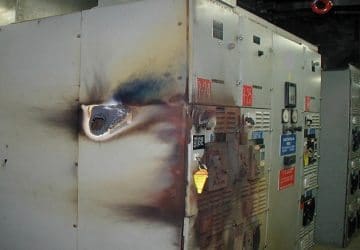
Rating Definitions Applied to Medium Voltage Circuit Breaker
The medium voltage circuit breaker is the device of choice when sophisticated system protection at the medium voltage level is required. Most modern medium voltage circuit breakers use a vacuum as the interrupting means, although sulfur-hexafluoride (SF6) based units still exist and in use. Medium… Read more
Sep 03, 2014 | By Edvard Csanyi
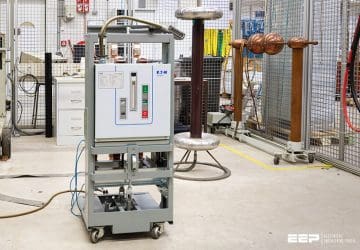
10 most common power disturbances that make our life difficult
As you know, deviation from sinusoidal form at the nominal voltage level is actually a power quality issue or power disturbance, defined as “any deviation from the nominal value (or from some selected thresholds based upon tolerance) of the AC… Read more
Aug 22, 2014 | By Edvard Csanyi
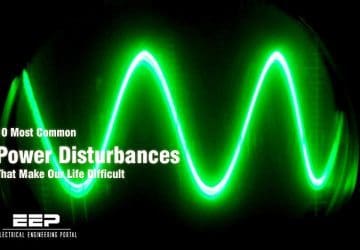
How to get rid off the harmonics in electrical system?
The subject of harmonics is also a contributory factor in electrical noise I already wrote few days ago (Cable spacing as a means of noise mitigation). It also causes several other problems in power circuit components such as motors, transformers and capacitor… Read more
Jul 16, 2014 | By Edvard Csanyi

Microprocessor and conventional secondary systems compared
Secondary systems are all those facilities needed to ensure reliable operation of the primary system, e.g. a high voltage substation. They cover the functions of controlling, interlocking, signalling and monitoring, measuring, counting, recording and protecting. With conventional secondary systems, the… Read more
Jul 09, 2014 | By Edvard Csanyi

Protection Against Overexcitation Of a Transformer
Overexcitation of a transformer means that the magnetic flux in the core is increased above the normal design level. This will cause an increase of the magnetizing current and the transformer can be damaged if this situation isn’t taken care… Read more
Jul 02, 2014 | By Edvard Csanyi

Arriving at the scene of a substation fire. What should you do first?
Power substations contain transformers, large quantities of oil, energized electrical equipment and, in some cases, cylinders of compressed gas. Some of the oil may contain polychlorinated biphenyls (PCBs). On arriving at a substation fire, normally you should first call for firefighters… Read more
Jun 23, 2014 | By Edvard Csanyi

Differences between disconnectors, load switches, switch disconnectors and circuit breakers
Various types of devices are available for carrying out the switching and protection tasks listed under a title that are specially designed to fulfill the respective requirements. The various parts of IEC 60947 (Low voltage switchgear and controlgear) specify the… Read more
Jun 20, 2014 | By Edvard Csanyi
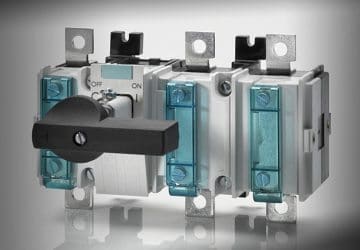
How to mitigate effects of very fast transients (VFT) on HV equipment
The level reached by very fast transients (VFT) overvoltages originated by disconnector switching or line-to-ground faults inside a gas insulated switchgear (GIS) are below the basic insulation level (BIL) of substation and external equipment. However, aging of the insulation of… Read more
Jun 11, 2014 | By Edvard Csanyi

6 Factors Influencing Requirements for a Good Grounding System
In an industrial plant or other facility that requires a grounding system, one or more of the following must be carefully considered (refer to Figure 1 below): Limiting to definite values the voltage to earth of the entire electrical system…. Read more
Jun 06, 2014 | By Edvard Csanyi

Which type of residual current device (RCD) to use and when?
We know how (very) important the total earth loop impedance Zs is in the reduction of shock risk. However, in TT systems where the mass of earth is part of the fault path, the maximum values of Zs given in… Read more
Apr 09, 2014 | By Edvard Csanyi
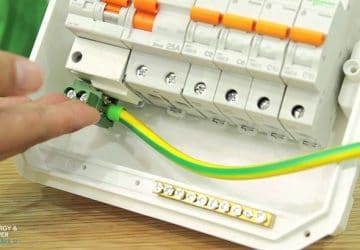
Erection of earthing arrangements (TNC, TN-S, TNC-S, TT)
The earthing arrangements (TNC, TN-S, TNC-S, TT) of low voltage networks is largely determined by the Low Voltage Supplies. However, if the incoming supplies are at 11kV and the transformers are in the ownership of the user, the LV supplies… Read more
Apr 07, 2014 | By Edvard Csanyi
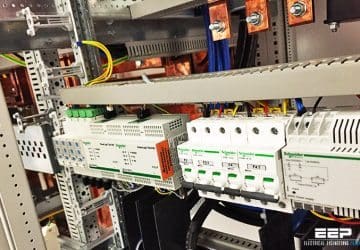
Practical calculations of lightning strikes frequency
We distinguish between the following frequencies of lightning strikes which can be relevant for a building or structure: ND – Frequency of direct lightning strikes to the building or structure;· NM – Frequency of close lightning strikes with electromagnetic effects;… Read more
Nov 04, 2013 | By Edvard Csanyi


